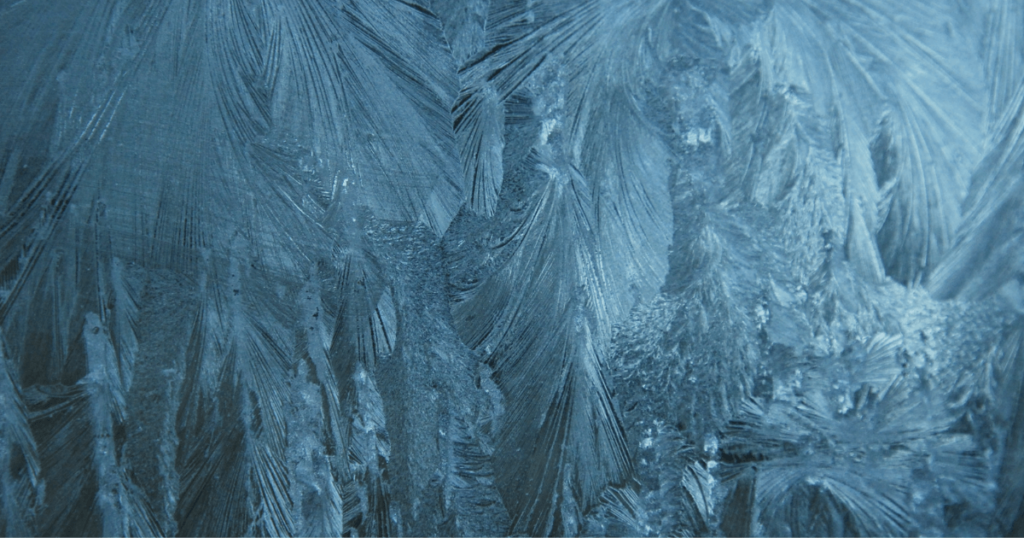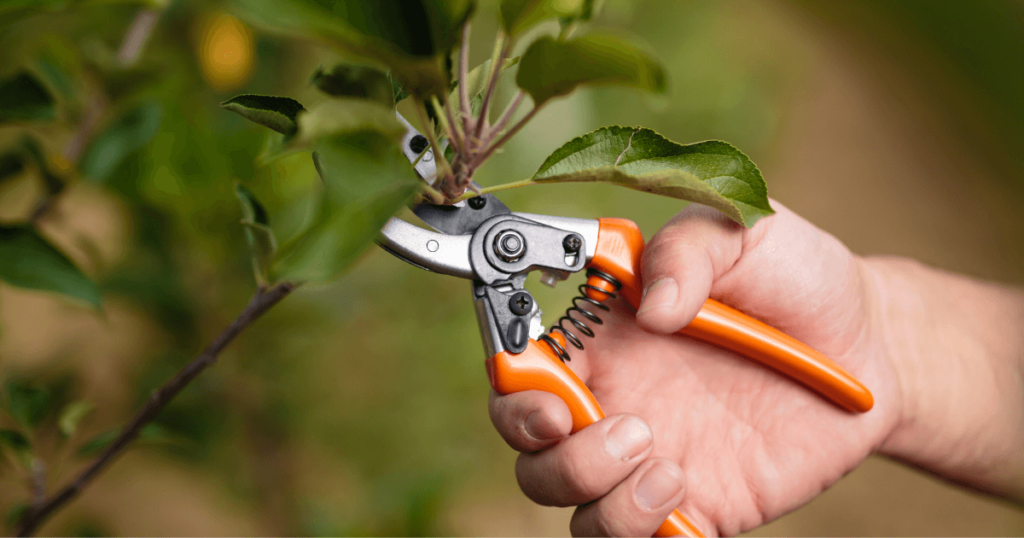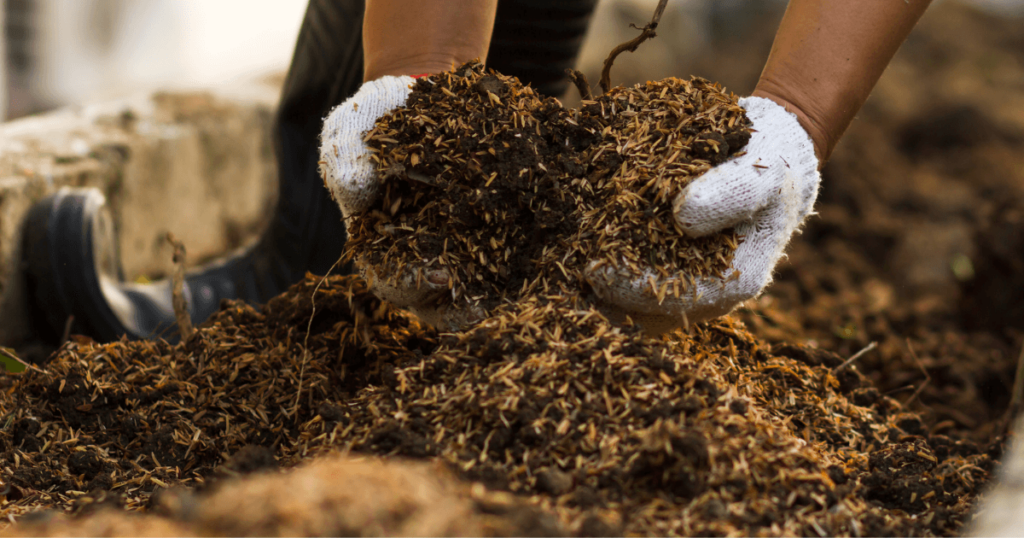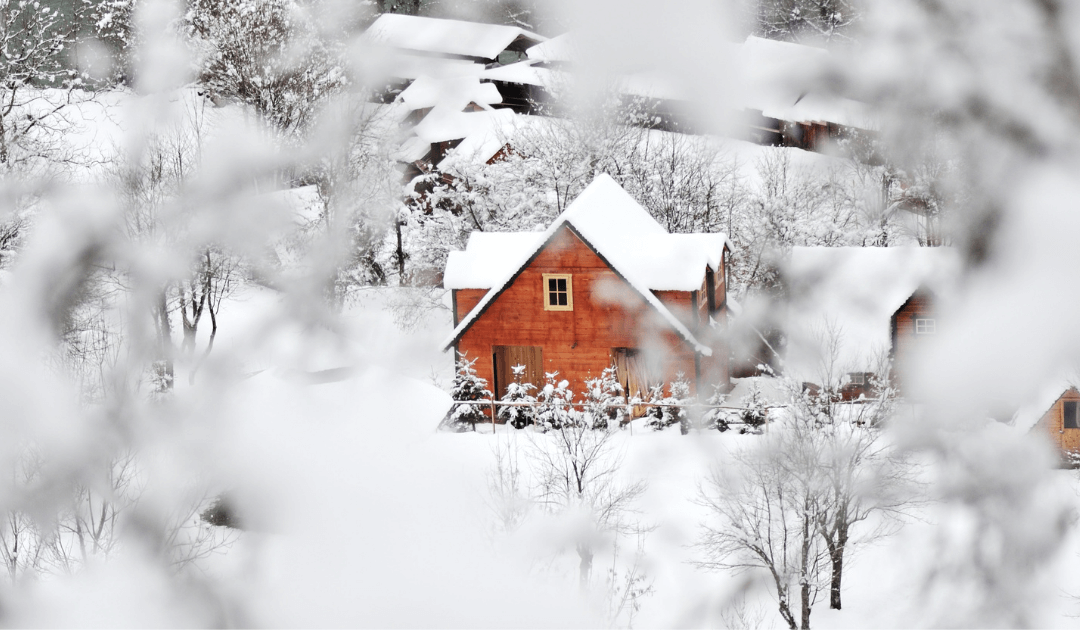We all understand the struggle. As autumn leaves fall, you start to realize winter is approaching. It’s not just the dropping temperatures; it’s the thought of your beautiful yard tucked under a blanket of snow. The yard where you spent summer evenings is about to face harsh conditions. We feel your concern and share your desire to protect this valuable part of your home.
Don’t worry, though. With the right steps, your yard can thrive throughout winter and emerge in the spring as beautiful as ever. Here are some tips on how to prepare your yard for winter so you can enjoy the beauty year-round.
1) Clean Up and Declutter
Start by tidying up your yard. Clear out any patio furniture or other items that won’t withstand colder temperatures. Then, gather up the leaves by raking them. You can include these autumn leaves in your compost bin or use them as mulch to safeguard the plant roots. And don’t overlook the importance of cleaning out your garden beds as well!
2) Lawn Maintenance
As the first frost approaches, start by mowing your grass shorter to prevent the formation of snow mold. Fall is the ideal time to fertilize cool-season grasses, providing them with a boost of high-nitrogen fertilizer before the growing season concludes.
Conversely, warm-season grasses can benefit from pre-winter feeding to fortify their roots for the upcoming growing season. By following these steps, you can ensure the health and vitality of your lawn throughout the year.

3) Tree and Shrub Care
Trees and shrubs need extra care during the winter. Wrap the tree trunks with burlap or tree wrap to protect them from the harsh winter winds. Also, consider applying a layer of mulch around the base of the trees and shrubs. This helps maintain soil moisture and protect roots from freezing temperatures.
4) Winterizing Garden Beds
When winter comes around, garden beds need special attention. Start by removing any perennial weeds that may have taken root. Next, apply a thick layer of mulch, like chopped or shredded leaves, to your garden beds. This not only enriches the soil but also protects perennial plants and trees from the cold.
5) Outdoor Furniture and Equipment
Cold weather can be harsh on your outdoor furniture and equipment. Before the first hard freeze, clean and store your patio furniture in a dry place. If storage space is an issue, consider using covers designed for outdoor furniture.
Your garden tools need care, too. Clean them well to remove soil and plant material, then store them indoors. This prevents rust and keeps them ready for use in spring.
6) Gutter Maintenance
Gutters should be cleaned at least twice yearly. Fall is generally the right time for this task. As leaves fall, they can clog your gutters, causing water to overflow and potentially damage your home’s foundation.
Make sure to clear out all the fallen leaves and debris from the gutters. This ensures that the fall rains and winter snow melt can flow freely, reducing the risk of water damage.
7) Winter Pest Control
As we move into the colder months, it’s crucial to consider winter pest control.
-
During periods of dormancy, numerous pests actively seek refuge in warm areas, including your yard and garden. To effectively address this issue, begin by thoroughly inspecting your yard for any signs of pest infestation. Target specific areas with high levels of infestation for treatment.
-
Consider incorporating a high-nitrogen fertilizer into your fall routine to fortify your turf grass against pests. Not only will this help protect it, but it will also stimulate growth come spring. Additionally, take precautions to safeguard your plants, particularly newly planted trees and plants, by utilizing tree trunk wraps or other forms of mulch to discourage burrowing pests.
-
Keep in mind that compost piles can attract pests, so it is crucial to maintain your compost bin properly. Regularly turning the compost and layering it with a generous amount of shredded or chopped leaves can effectively deter pests.

8) Snow and Ice Removal
Proper snow and ice removal is a vital aspect of pre-winter lawn care. Prolonged snow coverage can lead to the growth of snow mold, which poses a threat to your lawn. Therefore, it is crucial to promptly remove excessive snow from both your lawn and garden beds.
As the first frost arrives, it is the ideal time to contemplate your snow removal strategy. While cool-season grasses can tolerate some snow, an excess amount can result in soil compaction, which harms the roots.
To effectively remove snow without causing damage to your plants or grass, opt for gentle tools like a snow rake. Avoid using salt or chemical deicers on your lawn or near plants, as they can negatively impact the soil and roots. Instead, utilize sand or gravel for better traction on icy paths.
9) Emergency Supplies and Planning
-
While preparing your yard for winter, don’t forget about emergency supplies and planning. This includes having enough supplies on hand in case of severe winter weather, such as sand or gravel for icy paths, and a quality snow shovel or snow blower.
-
If you have an irrigation system, make sure to drain it before the ground freezes to prevent pipe damage. Also, consider wrapping delicate shrubs in burlap to protect them from freezing temperatures and harsh winter winds.
-
Planning ahead also means thinking about next spring. Store garden tools properly to prevent rust and damage. And remember to mow and fertilize your lawn one last time before the cold sets in. This gives your lawn nutrients for the cold winter months and a head start when the growing season returns.
10) Protect Perennials
Ensuring the well-being of your yard during winter involves a crucial responsibility: safeguarding your perennial plants. These valuable contributors to your garden grace us with their presence year after year. As the frigid winter looms and temperatures plummet, it becomes imperative to shield them from the harsh frost.
Start by cutting back the foliage once it has died back naturally. Next, add a generous layer of mulch around the base of the plants. This helps to insulate the ground, keeping it warmer and preventing soil compaction. Mulching also helps to retain moisture and suppress weeds. For extremely sensitive perennials, consider additional protection like a burlap wrap. Remember, the goal is to ensure your perennials survive the winter and thrive in the early spring.

11) Prune Your Trees
Preparing your yard for winter requires the essential step of pruning your trees. As the colder temperatures set in, trees enter a dormant period, making it the right time for pruning. This not only shields them from winter weather damage but also stimulates new growth in the early spring.
Start by removing any dead or diseased branches. Then, trim back branches that are too close to your house or overhead lines. Be careful not to over-prune, as this can stress the tree.
12) Consider Using Salt Alternatives
While salt is effective at melting ice, it can harm your lawn, plants, and the environment. Instead, consider using salt alternatives. Sand, gravel, or even cat litter can provide traction on icy paths without damaging your turf grass or garden beds.
For those with pets, consider pet-safe ice melt products that won’t irritate their paws. And remember, whatever product you choose, use it sparingly. Excessive use can lead to soil compaction and other issues.
13) Protect Your Pond
If you have a pond in your yard, don’t forget to prepare it for winter. As the ground gets colder, ponds can be at risk. Start by removing fallen leaves and other debris. This prevents the water from becoming too nutrient-rich, which can cause harmful algae blooms.
Next, consider installing a pond heater or de-icer to keep a small area of the pond ice-free. This allows for gas exchange, which is crucial for the health of fish and plants. Also, if you have fish, stop feeding them once the temperature drops below 50 degrees.

14) Don’t Forget About Your Compost
Maintaining your compost pile is an important part of pre-winter lawn care. As colder temperatures set in, it’s a perfect time to add fall leaves and other garden waste. This will decompose over the winter, providing nutrient-rich compost for your garden beds in the spring.
Remember to turn your compost pile regularly. This helps speed up the decomposition process and prevents the pile from becoming too wet or dry. Covering your compost bin with a tarp can also help retain heat and moisture during the cold months.
Moreover, a well-maintained compost pile not only enriches your soil but also helps reduce perennial weeds.
15) Monitor Your Yard’s Drainage
Monitoring your yard’s drainage is crucial as you prepare your lawn for winter. Excess water from fall rains can lead to soil compaction, which harms plant roots and inhibits new growth. Make sure your yard drains properly to prevent this.
If you notice standing water, consider aerating your lawn. This helps improve water absorption and prevents surface runoff. Protect plants in low-lying areas by adding a layer of mulch to insulate them from freezing temperatures.
Also, drain your irrigation system before the ground freezes to prevent pipe damage. By ensuring proper drainage, you can keep your yard ready for the next growing season.
Conclusion
In conclusion, knowing how to prepare your yard for winter is the key to maintaining a healthy, thriving landscape year-round. The process involves a variety of tasks, from pruning trees and protecting perennials to ensuring your yard’s effective drainage.
Additionally, replacing salt with eco-friendly alternatives and proper care for your compost heap contribute to your yard’s vigor. By taking these steps, you ensure your yard remains resilient throughout the frosty months and ready to burst back into life come spring.

